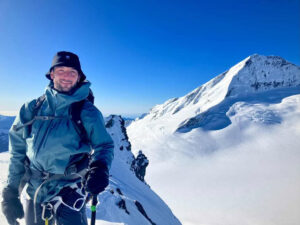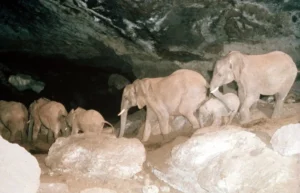A passion for the natural world drives many of our adventures. And when we’re not actually outside, we love delving into the discoveries about the places where we live and travel. Here are some of the best natural history links we’ve found this week.
Spiders use their webs as ears: Like most vertebrates, humans have eardrums that convert the pressure from sound waves into signals for our brain. It has long been unclear how smaller insects do this, or even if they can hear.
Mechanical engineer Ron Niles has spent decades trying to answer the question and finally has. Orb-weaving spiders use their webs to capture sound. In the study, spiders turned, crouched, or flattened in response to different sounds in the air. The spider silk catches the vibrating air particles that make up a sound wave. Spiders detect the movements of the web through sensory organs on their legs and tarsal claws. Spiders can both localize the sound source and detect its incoming direction with 100% accuracy.

Maxlimer. Photo: SeaKit International
Robot researcher bound for underwater volcano
Robot maps underwater volcano in Tonga: The Hunga-Tonga-Hunga Ha’apai volcano erupted in January. It was one of the largest volcanic eruptions in over a century. Ash and rock flew 30km into the atmosphere, and a tsunami swept across the Pacific. An underwater robot, Maxlimer, will now try and discover exactly what caused the eruption.
The 12m-long robot will spend this June mapping the underwater volcano and measuring the conditions around it. The vehicle will be operated remotely from the UK.

Photo: NASA/Terra MODIS/Scott Sutherland
Conger ice shelf collapses: For the first time since satellites began observing Antarctica, an ice shelf on the eastern side has collapsed. Glaciologist Catherine Walker has monitored the 1,170 sq km Conger ice shelf for years. It had been retreating but was seemingly stable.
Walker believes that last month’s freakishly high temperatures in East Antarctica, combined with record-low sea ice, were a factor. While it is now fairly common to see ice shelves collapse in West Antarctica, those in East Antarctica are usually much more stable.
Which came first, big body or big brain?
Microplastics found in human blood for the first time: Researchers have found microplastics in the deepest parts of the ocean and on the summit of Mount Everest. It is well known that humans consume tiny pieces of plastic in food and water. Now for the first time, they have turned up in human blood. When scientists tested the blood of 22 people, 17 had microplastics within them.
Half the samples contained PET plastic, often used in drink bottles. This shows that these tiny plastics can travel around the body and may get lodged in organs.
Plastics can damage human cells. Babies and young children are particularly vulnerable, says eco-toxicologist Dock Vethaak. Babies who feed from plastic bottles take in millions of microplastic particles every day.
Early mammals got big before they got smart: Dinosaurs died out 66 million years ago, which left mainly small animals on Earth. Scientists thought that as these evolved to become larger, they also became more intelligent. New evidence suggests this was not the case.
In the time of dinosaurs, many mammals were small and fast to avoid being eaten. The disappearance of the dinosaurs allowed mammals to increase in size. However, their brains did not similarly enlarge until 10 million years later.
Researchers disagree about why brain size began to increase much later than body size. Paleoneurologist Ornella Bertrand believes that the brains began to develop as competition for food increased. Meanwhile, neuroanatomist Suzana Herculano-Houzel thinks that plentiful food gave mammals more energy for their brains to grow.






